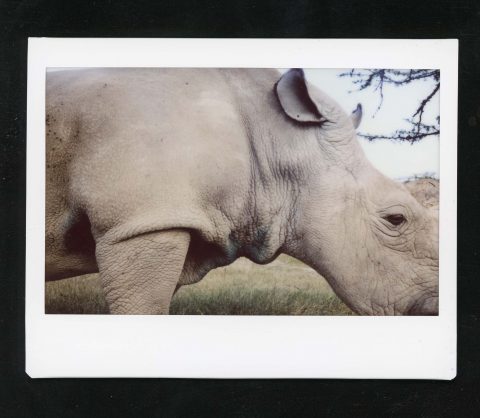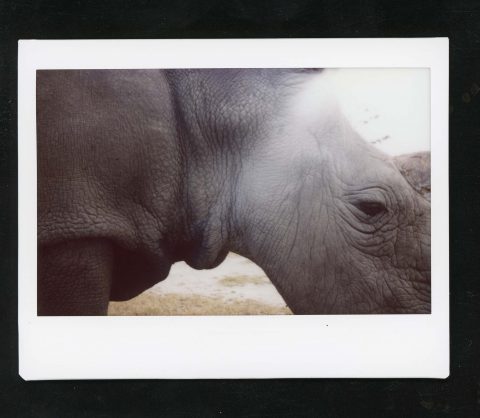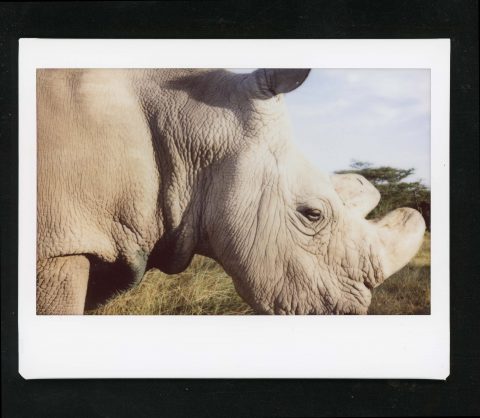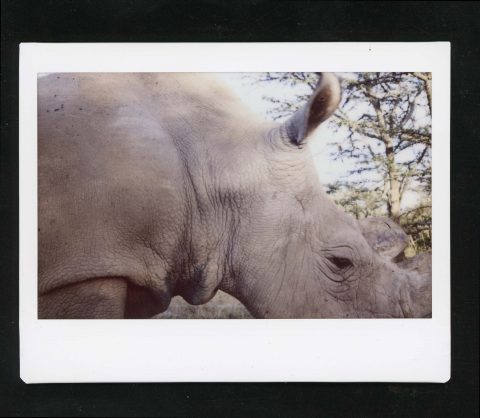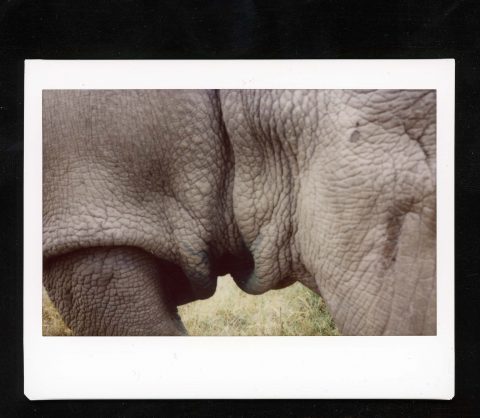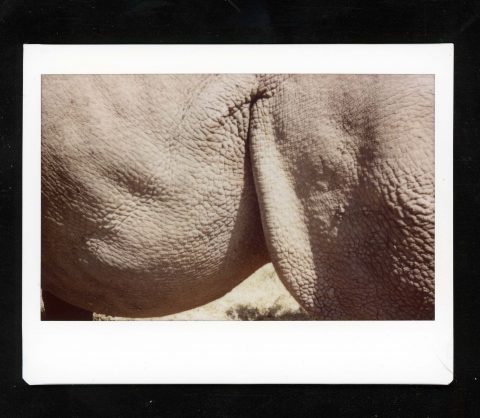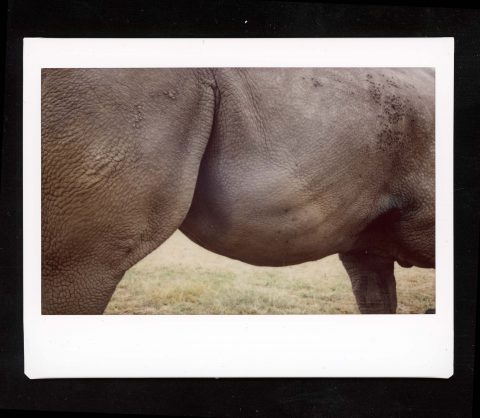Will Sudan, the world’s last male northern white rhinoceros, survive through art?
- Luca Trevisani, Sudan, 2016, polaroid.
- Luca Trevisani, Sudan, 2016, polaroid.
- Luca Trevisani, Sudan, 2016, polaroid.
- Luca Trevisani, Sudan, 2016, polaroid.
- Luca Trevisani, Sudan, 2016, polaroid.
- Luca Trevisani, Sudan, 2016, polaroid.
- Luca Trevisani, Sudan, 2016, polaroid.
- Luca Trevisani, Sudan, 2016, polaroid.
- Luca Trevisani, Sudan, 2016, polaroid.
- Luca Trevisani, Sudan, 2016, polaroid.
As time goes by, people are getting more and more aware of how aggressive poachers in Africa have become and, on the other hand, how the Continent is slowly becoming protective about itself and its unique natural beauties – is it a sign that a new sensitivity is developing in many countries in Africa? According to Laurie Marker, who founded the Cheetah Conservation Fund in 1990, only 7000 cheetahs survive today – there were 100.000 of them at the beginning of the XIX century. Last week, 105 tons of ivory and 16.000 elephant’s tusks, confiscated by the Kenyan police, have been burnt in the Nairobi National Park at the presence of Kenya’s President, Uhuru Kenyatta, and personalities such as George Soros, Howard Buffett, Michael Bloomber, Angelina Jolie, Brad Pitt, and Nicole Kidman. The data provided by the association Poaching Prevention are frightful. There were 500.000 rhinos across Africa and Asia at the beginning of the XX century. They were 70.000 by 1970. Only 25.000 survive today. In February 2013 the IUCN reported that there were just 20.405 white rhinos and 5.055 black rhinos left in Africa. If poaching continues rhinos will quickly become extinct in the wild. And effectively, the Northern white rhinoceros will soon be extinguished. After having spent most of his life in a Czech zoo, the last of them, Sudan, 42 years old, currently lives at the Ol Pejeta ranch, Kenya.
is how the novelist Gianluigi Ricuperati, who paid a visit to Sudan last year as a member of an artist’s expedition aimed to film the animal, describes to CFA his experience. As you will see, art turns out to be an ideal point of view to observe, and maybe better understand, such a complicated piece of reality. What, in the end, is this nostalgic late witness of how earth was 40 million years ago trying to tell us about ourselves? Only artists can really explain, and perhaps they feel it, as a few months after this first expedition, a second one, promoted by Diana Thater, travelled to Kenya to get acquainted with Sudan. Who is going to be the next one?
In October 2015 the artist Luca Trevisani introduced me for the first time to the existence of Sudan, the last living specimen of a sub-species of Rhinos called Northern white rhino. Its condition is the result of wild poaching, international black market of horn dust, absurd and irrational beliefs, and the semi-eternal troubles that affect the relationships between humans and between humans and animals on our planet and in that peculiar area of our planet.
The rhino’s horn is extremely valuable, and like all extremes this fact is interesting per Se, but also because of the strange and unparalleled consequences it generates in very different departments of our interconnected, violent, beautiful, globalized and frail spaceship earth: Sudan was at the same time a piece of natural art, a witness and a victim of the brutality of our species, a talisman, an ideal story, and moreover the occasion for us to join a very unique event – the disappearance of a living masterpiece from our living catalogue.
His idea was to gather up a diverse group of people – visual, narrative, curatorial talents – and go with them in Kenya to meet and film the body and the life of the animal, and the guardsmen that protect him 24/7, and the tourist flow which allows this kind of economy.
So we went. Myself, the writer, Giovanna Silva, the photographer, Davide Giannella, the curator, and obviously Luca Trevisani, the artist and originator of it all. We spent some very focused times in the surroundings of Sudan Town, the state of exception in which this paradoxical story takes place. Luca’s film is now in the editing process, and Giovanna’s photos will become a book: the whole thing will also take the shape of an exhibition curated by Davide, and I’ve already written three texts inspired by this experience.
While I was there, free from the constraint of my mother language’s prosody and rules, I attempted a free-jazz rendition of what I was feeling, spending time and sharing space with humans on the verge of the final conflict between culture and nature:
Animals are more valuable than humans
money is more valuable than animals and humans
Horns made of keratin are more valuable than hair made of keratin
Almost-extinct rhinos are more valuable than almost-existent unicorns.
Northern White Rhinos’ horns, and their by-product, Anger Dust, are more valuable than gold powder, diamond power and angel dust.
My life is more valuable than yours.
My Head is Confused: wants To praise colonialism for its effort to organize the space: want to despise ghost colonialism for its effort to dominate time – through money, investments, ownership, traditional habits, army training camps, large donations of land.
I want to donate myself to the land – but end up just donating myself to lame charity, giving away poorly designed dirty notes of Kenyan shillings.My friends are shooting a movie about the last Mohican of a sub-species slaughtered on the altar of ignorance and beliefs: the impotence which the Anger Dust is believed to cure has injected impotence into the tubes and flutes of a generation – their generation – this generation – a slow, gentle, hydrant-peeing giant, in slow motion: producing a flawed potion: protected as a prince of the nation.
We live in the gilded age of paradox. We came to honor a champion of this age. He doesn’t speak: he doesn’t fuck (his ankles were broken by iced pavement of a zoo down in Prague, right next to the Castle): he seems to be very good at procrastinating his own death.
We seem to be very good at procrastinating our own death limit. That’s why we invented Africa.
March 20, 2018


